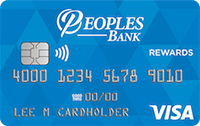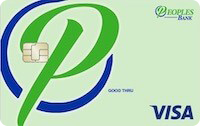Posted On: April 14, 2016 by Peoples Bank in: Budgeting Financial Education

Knowledge is power. That’s why Peoples Trust & Savings Bank is thrilled that April is Financial Literacy Month, a month for educating community members on tips and tools for a healthier financial relationship. With topics ranging from budgeting, lending, saving, and beyond, this month offers an incredible opportunity to better understand the potential your money holds. Below, we break down the steps to creating a basic budget to kick-start this month of learning:
- Identify money coming in. Look past the salary or hourly rate on your contract and focus on take-home pay. How much will you bring in after taxes? When do you see this pay-off – weekly, biweekly, or monthly? Factor in other sources of cash flow too, like child support or paychecks from a part-time job. Understanding what you own dictates how you spend.
- Establish money going out. Divide monthly expenses into three major categories: fixed costs, savings, and discretionary. Rent, utilities, food, gas, and debt comprise the fixed costs and determine funds for the remaining categories. Savings should include an emergency fund as well as allocation for retirement or down payments on vehicles or homes. Discretionary – the Fun Fund – is the most flexible and can ebb and flow with changes in income and expenses.
- Balance steps 1 & 2. The purpose of budgeting is to provide control over your financials. That means ensuring that money going out doesn’t exceed money coming in to keep your head above the debt line. If you find your listed expenses exceed your income, pick one of two options: seek ways to boost income or scale back expenses.
- Pick a management system. Armed with a financial plan, equip yourself with tools to help you stick to it. Traditional but trusted, the envelope method helps you keep funds in physically separated expense categories. Once money runs out from that month’s envelope, it’s gone unless funds can shift from other envelopes. A number of free or low-priced mobile apps can give you even tighter control of your budgeting, providing real-time updates of spending and handy visuals of your progress.
- Track progress. A long-term financial plan is simply a series of short-term goals. Monthly check-ups help you gauge success from the month, making sure you stayed on target. You can adjust funds as income or expenses fluctuate and spot ways to economize your budget.
Want to take your budgeting up a notch? Meet with one of our financial experts, who will work with you to plan a secure financial future. Give us a call to set up your appointment today!




